The insight of folk art from the author's. A short summary of lectures from the course "Usna narodna poetic creativity
The objects of the folk industry are old-fashioned. The managers of the Silskoy craft, the objects of the first need were set up, including the new folding constructions. By the year, the objects of the folk industry began to be praised not only for the practical, but rather for the aesthetic zmist: business, quiet promises (whistles, igrashka) and embellish home interiors. In the rural regions and regions of our land, the views of craftsmanship, handicrafts and crafts were developed. In a wide range of materials, we have chosen the most and most of them.
1. Orenburzky pukhovu khustka
The Orenburzky downy hustka is called a zbirne: a warm and important hustka shawl, a thin, light, delicate hustka - "pavutinka". The divine graces have in them unique features of the fluff of the mice breed, the folk beauty, harmony and order.
Kozy from Orenburg is throwing an indifferent fluff, which is to be used by those who are nigh on the street. Virobi from such fluff - light and light and, at the same hour, even more cold and warm.
V'yazannya khustok, pavutinok abo palantin - duzhe kopitka pratsya. Maistrina vitrachaє on the hand knitting of one hustka of the middle size is close to the month.

Openwork khustki-pavutinki of thin and vitonized layers, which can be pulled through the hoop. Smell of being appreciated by women in all their light and being vvazhayutsya a wonderful gift.
2. Tula samovar
At a great hour, the foreman of the Tula Zbroy Factory Fedir Lisitsin, loving maystruvate well, never mind, and once breaking a samovar. Then they made a samovar pledge, they sold midi virobes, which were criminally successful.
Samovars Lisitsin were famous for their versatile forms and chilling: baril, vases with carbides and gravings, egg-shaped samovars, with cranes at the dolphin's viewer, with loop-like handles, writing.
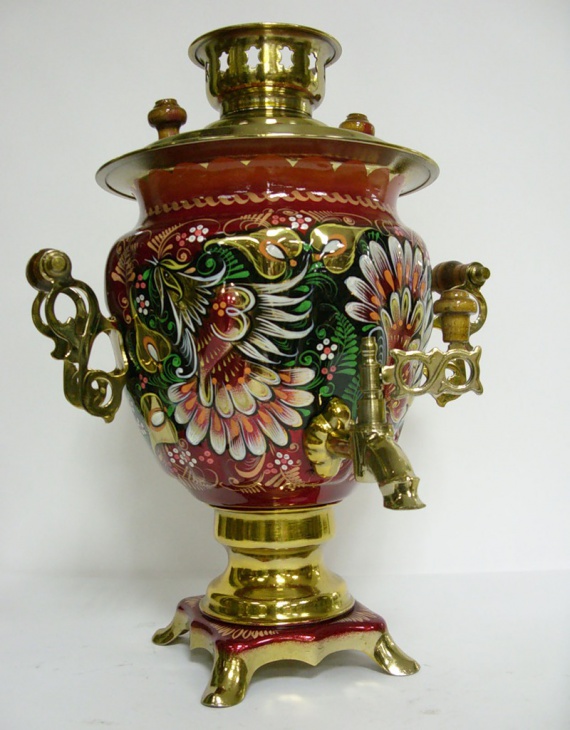
V cob XIX capital popularity nabuv factory "Merchants Vasilya and Ivana lomiv in Tula", founded in 1812 rotsi. On the bells of samovars, they engraved the inscription: "Vasil Ivan Lomov 'V'Tule".
For the temple habits of Lomov's samovar, some of the first Mali have the right to wear the sovereign Russian coat of arms yak find the city... I pony samovars, broken by the hands of the Tula maystras, are a worthwhile vivid mystery and an unmistakable attribute of traditional tea in Russia.
3. Palekhsky miniature
Palekh is a small-type settlement in the Ivanovo region, where it was moved along the road between the towns of Nizhniy Novgorod and Ivanovo. In 1923, the Persha of the Palekh miniatures was born, both of which are famous for their place.
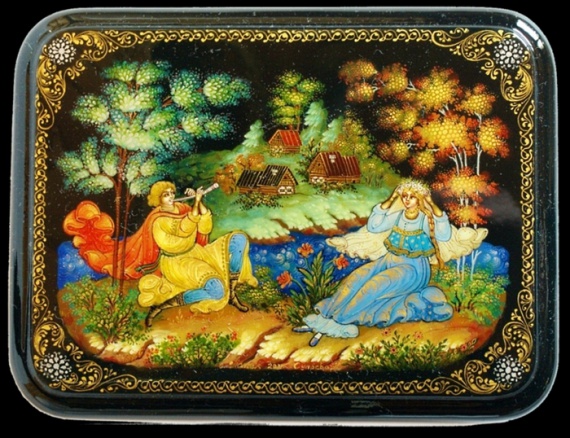
Palekh lacquer miniature is presented in a typical plot with haunted life, Kazok, pisen, bilin. Viconize out on the black aphid in gold.
For an hour, the area is so small and the plot is foldable, so the mayor has to go into the additional loop and assign robots to the number of miscellaneous.
4. Gzhel
At a visible 50-60 kilometers on the winter road from Moscow, in the Ramensky district, the members of the Yegoryevsky highway roztashovany two dozen were angry with themselves for the most beautiful powers and powers. Gzhel is the name of one of the strongest hair centers, which has become a favorite for the whole region, a symbol of a unique art and folk majesty.
With a hand, ten years of Gzheltsy opened up divovizhni for beauty and versatile design of kakhli for decorating stoves and stones. Ponad 500 of these images are now in his collection of Hermitage.
The Bagato Gzhel maestri took part in the history of the pottery industry in the first Russian museums.
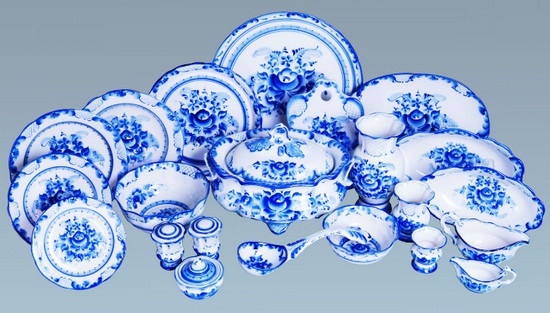
The history of Gzhel is seen in the city, and the nation's mystery was judged by the life of the people, the nation's promises were gaining new strength. At the Rizni Kintsi Planet see blue birds Gzheli, schob embellish people, vihovuvati feel the beauty.
5. Pavloposad khustki
The history of the Pavloposad khustka is being repaired since the end of the 17th century, and the heads of the Russian mayors themselves have become a vidomy for all the world and have long since become a visiting card of Russia. Primarily, Russian artists have proposed elements for the design of hostocks from other cultures: the whole lotus, the chamomile, the antique vases, the bouquets of flowers, the birds, the ancient symbols, and the rich images.
However, the main leitmotif of the Pavloposad khustok is all the same to leave the life of the Russian people: hard part, І immediately entrusted - radio and fun episodic from the life of people.
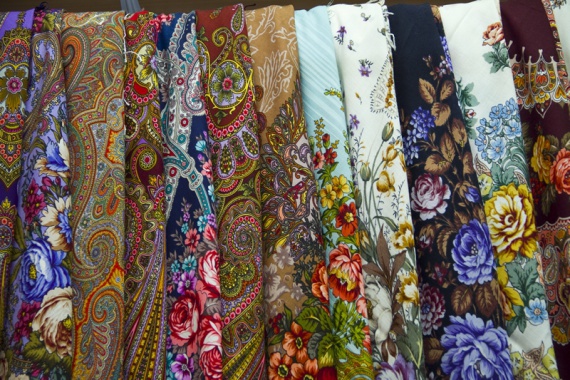
Yaskravі and lungs, zhіnіchnі pavlopossadskіe khustki are always fashionable current. Infections of the original babies are supplemented with small elements on the eye-catching fringes;
6. Vologda
Russian merezhiva - self-awareness, self-motivation behind the plots and technicians. Ale є in the middle are one, special. Most of the virobi of the Vologda non-living creatures are motsociyuyutsya with us with the word "fancy". And for a good reason - the history of the whole industry in the Vologda region is far away from the roots, and the axis has already become the capital of the enemy with its vitality.
In Vologda, weaving on wooden sticks and bobbins is a real thing. The whole image is visually striking, without interruption, of the same width, smoothly ringing with cloth. The stench is clearly visible on the white grates, adorned with elements at the eyes of the stars and sockets.
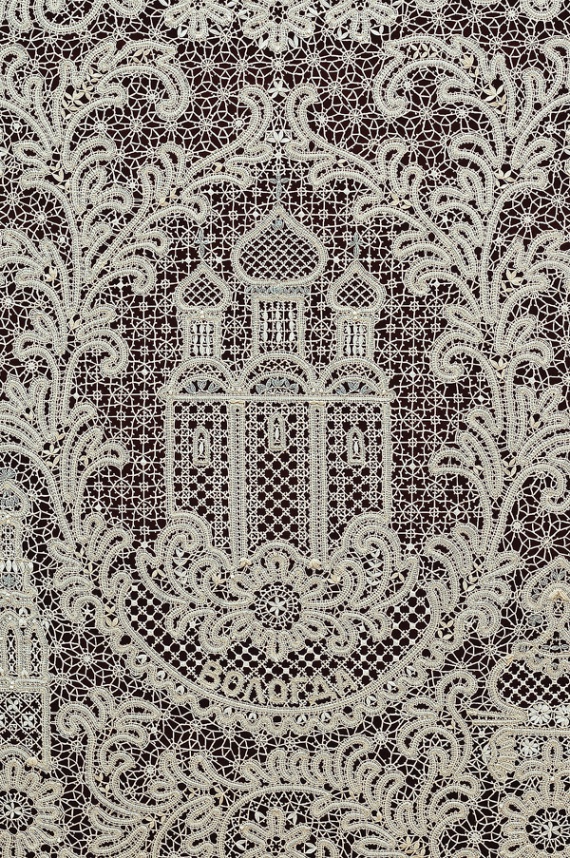
Under the rule of Peter I, the majestrin of lace making was sent to Russia from behind the cordon. The fashion for this promiscuity has led to the fact that the rich squads of the Russian noblemen became vivchati and robots with bobbins, and they organized majors in their gardens, and the villagers weaved deceitfully.
7. Shemogodskaya birch bark
Shemogodskaya Rizblennya is a traditional Russian folk art industry of birch bark development. Ornaments Shemogodskaya Rіzbyarіv is called "birch bark birch bark" and to be used for making screenshots, boxes, tea-boxes, pencil cases, boxes, stravs, tarіlok, cigarette cases.  Symmetrical cross-section Shemogodskaya design is built from tall ornaments, kil, rhombus, oval. The little ones can be inscribed with images of birds or animals, architectural motives, and one can find a stage of festivities in the garden and tea.
Symmetrical cross-section Shemogodskaya design is built from tall ornaments, kil, rhombus, oval. The little ones can be inscribed with images of birds or animals, architectural motives, and one can find a stage of festivities in the garden and tea.
8. Tula gingerbread
Tula glorified Russia not only with spirits, with samovars, harmonies, but with gingerbread.
Tula gingerbread is practically a miracle for the world, at least the Tula people themselves call this delicious delicacy. The pride, the need to say, is completely grounded, even with the history of the science, so that there are hundreds of rockies in the making of gingerbread. There are up to 300-year history of gingerbread mystery, and the whole lot is a great drowning.
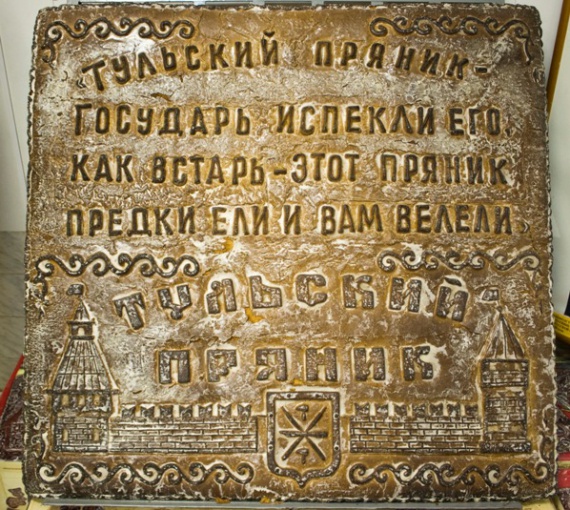
It’s unlikely that some of Tula's gingerbread was spiked, but only once did the history of the Tula gingerbread survive, but Tula gingerbread survived 13 emperors and an unlucky number of revolutions of war and lifelessness.
9. Rostov finance
Emal came to Russia from Vizantia, that Russian name emali - "fіnіft" - to resemble the Greek "fingіtіs", which is changed as "light, shining stone".
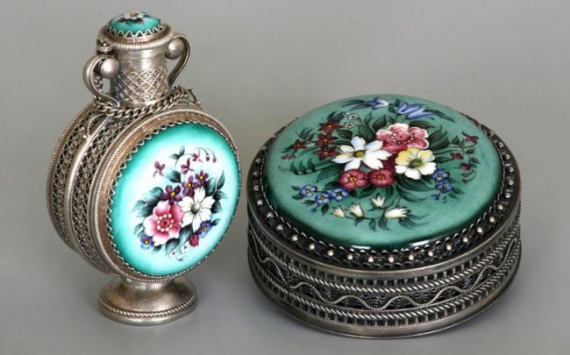
Rostov has a mystery of the fire leaves from the 17th century. You can wrap yourself up with the Kyivan maysters only from the Limozh. There are more than 800 rockets in emails. Ale and the stench is even more highly appreciated by the Rostov maestros, especially the malovnichi ministry.
10. Khokhloma Rozpis
Khokhloma is one of the most beautiful Russian industries, which originated in the 17th century in the city of Semyonov, near Nizhny Novgorod. The price of decorative design of furniture and wooden utensils, as a love not only of the clerks of the Russian old-fashioned world, ale and residents foreign lands.
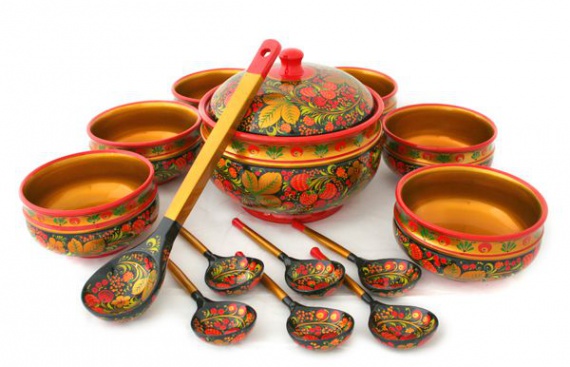
Chimerically intertwined grassy grasses with yaskravo-chervonykh berries and golden leaves on black aphids can endlessly. To this, to find the traditional wooden spoons, presented by the most insignificant drive, to forget the memory of the gift-giver, having taken away the goodness itself.
11. Abashevskaya igrashka
Promisel vine in the village of Abashevo, Penza region on the cob 17 st. Yogo to knit s people's saint"Whistler": Thousands of clay whistles were robbed to the saint. Abashevskaya whistles most often depicted creatures - goats, deer, rams, and not so often take on the phantasmagoric Cossack viglyad. Whistles were painted with bright blue, green, red barvy, in the best days.
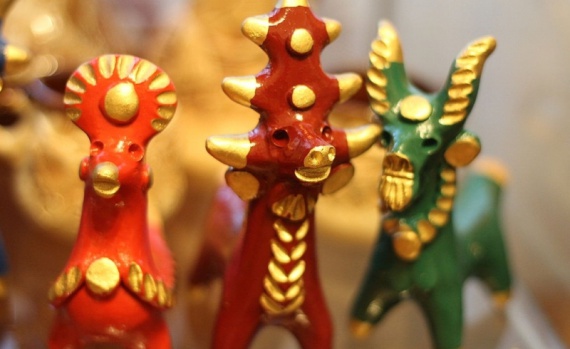
The secrets of linen and vipal were passed on in the family from generation to generation. Navchati was repaired for 8 years. Virobi from the clay in Abashevo were poured in the forges - sporuds of a rounded abo oval shape, vicladens from a cone of 1.5 m and a height of 2 m. The Meister climbed into the forge, and his squad served them from the top of the glechik and mountain men.
12. Zhostovskaya Rozpis
Є In Pidmoskov, the village of Zhostovo, the inhabitants of which are already from the beginning of the century will be able to embellish all the same speech - pidnos. The penzel of folk painters is the subject of knowledge of the quality of the artistic creation.
 For their history Zhostovskie pidnosi z odd subject became independent decorative objects, and the craft gained the status of a unique kind of Russian folk art.
For their history Zhostovskie pidnosi z odd subject became independent decorative objects, and the craft gained the status of a unique kind of Russian folk art.
13. Gorodetska Rozpis
Gorodotska woodworking is a traditional artistic trade, which has taken away active development in the middle of the 19th century in villages along the village of Uzol in the outskirts of Gorodtsia in the Nizhny Novgorod region.
Gorodotska's design is quirky in its own manner, so it’s important to do it. Zhodne GORODETSKE virіb cannot do without writing garlands, bouquets of windows, how to fumble with trojands and chamomiles.
Gorodetskiy promissed about fifty rock times. Writing of the 1st week of the development of the brothel was born again, and the most famous artists were born.
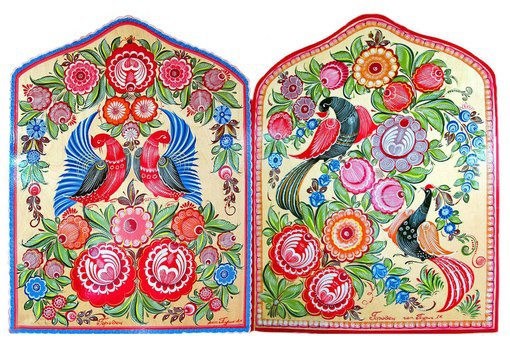
The revival of the Gorodotsky design is tied to the names of the artist I. І. Oveshkova, who organized the profession of artists in 1935
14. Dimkovskaya igrashka
Dimkovskaya igrashka - a symbol of the Kirov region, old history... With a hold of choir the capital, the Dimkovskaya igrashka was beating up the life style of the bagatokh generation of the majesty.

Get stuck out of the clay, dry and scorch in the oven. I will write it out by hand, it is a unique copy of the skin once it is flashed. Two identical games cannot be found.
15. Gusevskaya kryshtal
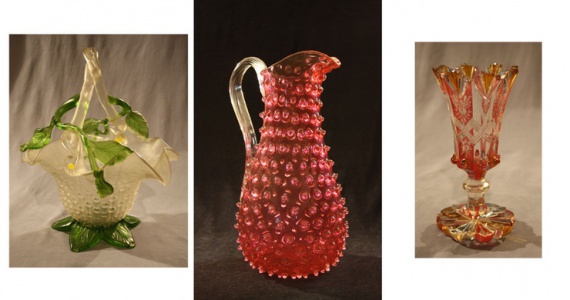
Virobi, seen at the Kryshtal plant of the town of Gus-Khrustalny, can be seen in the museums of the Usiy Svit. Traditional Russian suveniri, objects for the pobut, services for the Christmas table, vitonished embellishments, boxes, statues manual robots to visualize beauty native nature, Її. Especially popular is virobi from kolorovy kryshtal.
16. Ural malachite

From the genus of malachite - in the Urals, in Africa, in the Northern Australia and the USA, however, for the color and beauty of the malachite of foreign countries, it is impossible to grow up with the Urals. Tom malachite from the Urals gets involved in the newest market.

17. Matrioshka
The round-eyed and povnenka cheerful little girl in Khustin and Russian folk dress has grown up with the hearts of lovers of the folk art and beautiful souvenirs in all the world.
The infection of a matrioshka is not just a folk girl, the keeper of the Russian culture: there is a memorial souvenir for tourists, on an apron, which are subtly decorated with games, scenes of cossacks and landscapes with significant memorials.
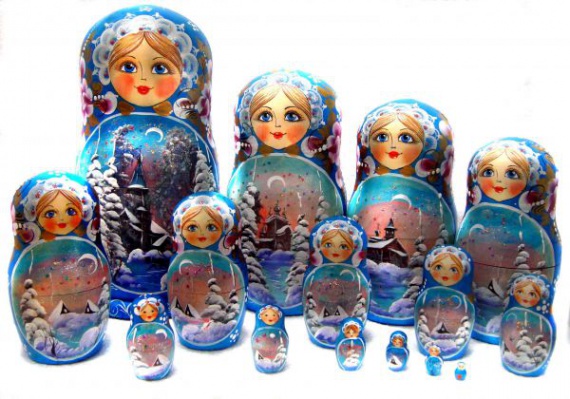
Matryoshka has become an expensive object of collection, which can cost more than one hundred dollars.
18. Mezenskaya Rozpis
The turns of the origin of this type of design lead to the mouth of the river Mezen of the Arkhangelsk region. She wrote about the home stuff - locks, ladles, boxes, screens, boxes. From the end of the 19th century, the center of the Mezen design was the village of Palashchel, and the Mezenskaya design on the tree was also the same "Palashchelskaya rozpis".
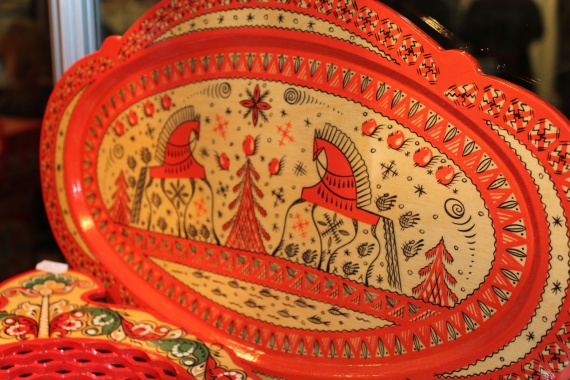
The list of registrations was carried out only by the choloviks, so that at the same time, women were specially trained. In the Danish hour, the Mezen register is practically used by all Russia, and in some schools, the won is included in the program of the creative arts.
19. Kazakovska filigran (filigree)
In Russia, filigree has been seen for a long time. Filigree virobes are seen in the excavations of the mounds of the IX century. Russia has one the biggest centers Scania virobnitstva is the village of Kazakova, Nizhny Novgorod region. Persha Kazakovskaya art_l based on virobnitstv Scania virob_bula was approved in 1939 rotsi. Rocky Great Vіtchiznyanoї vіyni artil did not adore her robots: they wove official chases, robbed little girls for them, made cigarette cigars. At the hour of the night - we have mastered the knife and vyrobnitstvo.

Kozhen virib uniquely - philigranny speeches are prepared only by hand.
20. Bogorodskaya fish
Sergiyev Posad and the yogo outskirts have been renowned as the historical center of the city's right in Russia. One of them was called the "Russian Igor's capital" or "the capital of the Igor's kingdom." In Bagatyokh navkolishnіh villages іgrashki robbed. The village of Bogorodskoye became the most famous one, which was not far from Sergiev Posad.

Bogorodskaya Ryzblennya to vikonutsya for the help of a special "Bogorodskiy" knife ("pike").
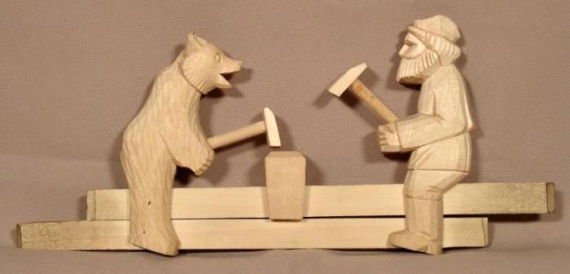
One of the cultivated rice is made for the production of ruddy igrashok. Naybilsh vіdoma іgrashka "Kovalі", call up the image of a man and a weddy, as by the end of the day we’re on a kovadlu. Tsya igrashka, vik what, for deyakim tribute, changing 300 rockyv, became a symbol of yak Bogorodskoe promislu, and the village of Bogorodskoe itself, added to the emblem of the village.
B.P. Cirdan
RUSSIAN FOLKLORE
Pidruchnik For other chief pawns
insight into the Russian Federation yak pidruchnik
for students of the most important pawns, to start
behind the fahom "Philology"
Vidavnitstvo "Flint"
Vidavnitstvo "Science"
References: Academician of the Russian Academy of Education Yu. G. Kruglov,
Dr. philol. sciences, honored. diyach science
V. I. Korovin
Zuєva T.V., Kirdan B.P.
Russian Folklore: Pidruchnik for other chief pawns. -
Moscow: Flinta: Nauka, 2002 .-- 400 p.: Il.
1SВN 5-89349-115-7 (Flinta)
1SВN 5-02-011697-1 (Science)
Pidruchnik is a part of the basic methodical set, which also includes the program, the anthology of folklore texts and the anthology of folklore doslidzhen.
The concept of the course is based on the freedom of folklore as the history of the development of venom. Three artistic systems have been seen: early radio, classical and late traditional folklore. The main respect is attributed to the genres of classic folklore.
ISBN5-89349-115-7 (Flinta) © Vidavnytsvo "Flinta", 1998.
ISBN5-02-011697-1 (Science)
from authors
The author preserved the traditional view of Russian folklore from the historical kut zoru, protesting from the formal sociological scheme. The concept of the course is based on the artistic specifics of the folk art... Stuck systemic pidhid yak vishy rіven uzagalnennya material. Three artistic systems have been seen, historically one has changed one: early radio, classical and late traditional folklore.
In folklore studies, the main unit of study is the genre, which in hand is the historical principle of the viklade of studies with a monographic survey of the surrounding genres. Seemingly, a lot of genres in many genres of universal qualities were taken out with a stretch of several periods, in the hand of the whole genre to be looked at once, but it allowed, having eliminated the fragility, it was completely visible to the poet's skinlity.
The course is theoretical, the chapter "Folklore is the subject of philological vivchennya", how to formulate the basis of folklore knowledge from students. Tsiy same meti serve as a vocabulary of scientific and folk terms. The author pushed the Vikladati material, not ominous in earthy vocabulary, protesting in the vocabulary of guiding the widening of the intelligence terms, with some students they can study in the ranks of robots.
Another razdil - oglyadova - is assigned to the development of folklore yak science. At the same time, the history of the collection of folklore creations is briefly discussed, the main selections are characterized, the history of theoretical development of folklore is revealed, and the positions of the new scientific directions (school) are described.
Early and late traditional folklore is represented by two families as well-known chapters, in which, in the order of the gallant food, the works of art, fortune-telling, snakes, parts, folklore of working people, folklore from the period of the Great Victory.
The main respect is attributed to the classic folklore - a rich system of innovative, new genres, which functioned productively by stretching out the table. Genri abo group spore genres of classic folklore are characterized in
okremikh razdilakh: "Rites and ceremonial folklore", "Little genres of folklore. Paremii", "Kazki", "non-fabulous prose"; "Bilini", "Historical Pisni", "Baladi", "Spiritual Virshi", "Lyric Out-of-Order Pisni", "Folklore Theater. People's Drama", "Childish Folklore. Folklore for Children".
The main problems of the course are the specifics of folklore tradition, historical poetics, poetics of genres.
In addition, there are illustrations: portraits of prominent pickers and pre-legends of Russian folklore, of the people of the nation, popular prints and others.
Pidruchnik is the main part of the initial-methodical set, which, in addition, includes the program, the anthology of folklore texts and the anthology of folklore literature. The program is based on the concept, change and direction to the course. Cituvannya folk, creatures, their names were given in the handbook, but according to the anthology; Russian Folklore: A Reader for Vishchikh navchalnyh pledges / Order. T. V. Zuєva, B. P. Kirdan. - M .: Flinta, Nauka, 1998. (fast: Reader). Інші vypads are accumulated. At the chapters of the handler є to the іnshoi anthology: Russian folklore: Readings of doslіdzhen for other chief mortgages / Order. T. V. Zuєva, B. P. Kirdan. - M .: Flinta, Nauka, 1998 .. ( quick : Reader of the Doslidzhen).
Authors vrahuvali bagatiy dosvіd vishoї school navchalnyh posіbniki: Sokolov Yu. M. Russian folklore. - M., 1941; Russian folk poetry creativity / Ed. A. M. Novikovo. - M., 1969 (also 1978 and 1986); Kravtsov N.I., Lazutin S.G. Russian folk creativity is asleep. - M., 1977 (і 1983); Anikin V.P., Kruglov Yu. G. Russian folk poetry. - L., 1983.
1.1.It’s busy. Folklore yak mystestvo words.
Understanding the subject of folk art. The main features of the folk art. Freedom of the creative process and running around. Collectiveness of creativity and form. Unity of collective and individual. Tradition, change and variability. Syncretism. The folk poetical creativity is like the mystery of the weary word, the freedom of its artistic features, style, genres.
1.2. Genre system of Russian folklore
Regional Problems: Raised Folklore Into Genres and Pools. The problem of the classification of genres. Food about genre types. Genetic link of genres. backbone processes in genres, including some genres from іnshi. Functions of genres. Poetics of Poetry and Genres of Folklore as an Artistic System.
1.3... Walking folklore and early stages of development
Istorichne vivchennya folklore and this problem. Principles of chronological timed to folklore. problems historical poetics... Understanding the typological peculiarities of folklore manifestations. Features, zagalny for folklore native peoples.
Significant periodization of the history of Russian folklore: folklore of pre-class suspension, the era of feudal suspension, the era of capitalism and socialism. The theory of labor mobility of the arts. Works of Pisni. Animism, anthropomorphism. Link to folklore and mythology. Found common Slavic folklore. History of ancient words and folklore. Christianity and dvovir'ya in folklore. Kyivska Rus, Moskovska Rus, the formation of Russian statehood and sleepy creativity... Formation of the national Russian tradition.
1.4. Rites and rites of passage
Significant characteristic of the ritual travel. The timing of the її to the state and family-by-beat rituals. Utilitarnі and relіgіyno-magіchnі funktsії. Classification of rituals. Celebrating and celebrating ritual travel. Cyclization and warehouse. Winter cycle train. Draw the Christian rituals. Christmas carols. Observance of vorozhinnya. Maslyana.
Trains of the spring-summer cycle: springtime, Troitsko-Semitsky rites, Kostroma, Kupalsky rituals.
Basic (stubble) rituals.
Family-by-word rituals: warehouse and classification. Pilgrimage, wedding, recruitment, funeral rites.
Ritual travel: the classification of ritual travel. Viroki, decorating. Conjuration, snake. Pisnі: ritual, incantation, magnificence, basic, іgrovі, lyrical rituals pictures. Voice.
1.5. Prisliv'ya. orders
Seize those orders. Visnachennya of invitations and orders; the problem of їх interconnection. Forms pobutuvannya sendings і orders, їkh calls with living my. Mysce of spillovers in the systems of genres of folklore. The walking of the spree, the first is the utilization. The stiffness of the attitudes, the richness of the proverbial judgment. Moving and poetical function. Prior to the classification of prizes. The poetics of the admission.
Order. Viznachennya orders. The imagery of artistic orders; orders and phrases. Type of orders, їх structure. and this theory is clearer. Picking up invitations and orders.
1.6. riddles
Riddles: viznachennya, prokhodzhennya, zvyazok with allegorical promos. Thematic groups riddles. Link with riddles with rituals and with іnshim folklore genres... Poetic imagery and artistic enigma. Іstorya zbirannya i vivchennya riddles.
1. 6. kazki
Designed for the genre and yogo types. Cossacks about tvarin: pozhazhennya vimislu, those ideas, images. Allegoricalness of kazoks about creatures. Poetics and style: compositional singularity, cumulative, repetition, dialogue, games / priyomi / adapt.
Charіvnі kazki: viznachennya enchanting cossacks... Link with myth. Life is the basis of ancient plots. Poetics and style: composition, static character, similarity of plots and motives, repeat three times, the same line of development of the story, the way of creating the hour and the moment, stylistic rituals, (mythology. "Morphology of the Kazka".
Sotsialno-pobutovі or short stories: walking, social and ideological and artistic nature. Peculiarities of poetry and style. See the beat-up kazok.
Collection and vivchennya of kazoks. After the classifications of plots: proponents of Kazakh plots by Aarne-Andrєєva, Thompson.
1. 7. Tell, legends, bilini, bouvalschini
Transfer: viznachennya, genre signs. Thematic groups of re-orders. Tell me about the memorials of the Russian history and historical acts. Toponіmіchnі rekazi. Poetics of perekaz_v. Leave a note to the other genres of usny prose. Artistic freedom of transfer.
Legends: the designation of the genre, the assignment of one to the last species of the same position. Link with church bookishness and religious function. Legends and an odd thought to the people in the era of the middle. Artistic ear in legends.
Bouvalschina: designation of the genre, view from the list. Rozmaittya those buvalschin. Special dosvid, Style, mov announcement. Elements of artistic creativity.
Bilichka yak genre. Religious function and non-visual artistic creativity in tickets. Viraz in them folk demonology and folk vervans. See bilechek, їх those і style. Classification problems.
1.8. bilini
The designation for the genre. The term "bilina" and "antiquity". Bilini and historical action: political representation vіyskovoї іstorії ancient Rus, Social-class names: names, geographical names, objects of material and spiritual culture in Bilins. The problem is that of a prodigy. Nationality and theory of aristocratic promenade to the epic.
Periodization of the history of the post. Plots, those and images found period and the coming hours. The link between the bilin and the mythology and the definition of a particular system and imagery and style. Cyclization bilin. Bilini Kiev and Novgorod Rus. Historical and poetic classification to the plot. Idea and historical basis of the most popular bilins: "Volkh Vseslavievich", "Olga and Mikula", "Dobrinia and the Serpent", "Friendship of Prince Volodymyr", "Ilya and Nightingale-Rozbeinik" andin. Typizatsiya in bilines. Poetics. Principles of images of people and ideas in bilins (hyperbolism, ideology). Composition. The last of the episodes, the beginning of the story, the repetition: the acceleration and hope of the development, the beginning and the idea. Poetic mova
Save the bilin in the sleepy mess. Storytellers (, і ін.) Yak nosії and virazniki of the traditional traditions.
Art value of the epic - the greatest monument of the Russian culture. The history of the collection and the most recent selection. Vivchennya bilin.
1.9... Historical pictures.
The term "Historical Song". zbirniki historical songs XIII-XIX cent. Istorichna pisnya yak stage development of epic creativity. The onset of the sound of historical songs with bilines. Link of historical songs with other genres of folklore. The principles of artistic and reliable images of podіy and special features in historical paintings. History of the People and Imagination in Songs ("Shchelkan Dudenteviche in."). The main cycles: about Ivan the Terrible, about Ermak, about the Time of Troubles, about Stepan Razin, about Peter I, about the stories of the Great Victory Day of 1812. Types of characters: people's hero, Tsar, commander. Image to the People. Genres of types: epic songs (with an open plot, one piece), lyro-epic songs. Satirical motives. Composition and style.
1.10... baladnі pisnі
The designation for the genre. Vyvchennya and zbirannya baladnykh pisen. Anthology ,. The nature of the Russian baladic pissen, their promenade. Early baladni pictures (XIV - XVI centuries): "Dmitro and Domna", "Prince Roman dragged the squad", "Prince Mikhailo". Food about historical balads (a song about polony). The social nature of humanism, which was played in early baladic songs. Early anti-clerical baladny songs: "Vasil and Sophia", "Churilov-igumenya", "Prince and Elders". Baladni paintings of the 17th century: "Threat to a young man", "Druzhina rozbіynik", "Brothers rogues and sister." Pizni baladni pictures of the 17th-ear of the 18th century: "Vanka the housekeeper and the prince Volkonsky", "The mother of the family has her honor." Poetics: peculiarities of composition and plot, drama, psychologism, mystery of the tragic, character of the verse.
1.11. lyrical pictures
Specificity of the genre. Zbirniki i. Life and poetical function. Spіvіdnoshennya lyricheskikh pіsennya i ritualnyh. Principles of the classification of lyrical animals. Basic types. Parts of the pic. Oh zm_st, image. Pisni hot and satirical. Long pictures. Love and family pictures. Їх зміст, subject, different ways transmission to the wizard: messages and thoughts. Compositional principle. Traditions of art for image creation: painting of nature and pobutu, portraits of heroes. The hero of lyric songs. Assign the inner openness to the image of the people; symbolism, її main thematic views. Composition. Artistic parallelism, metaphor, epitheti, sound writing.
1.12... Folk drama
Viznachennya dramas as a kind and genre. See and form a dramatic action. Collection and anthology. Dramatic display of epic and lyrical creations. Link of dramatic performance with folk rituals and games. Satirical p'esi, intermedia, monologues in the repertoire of the viconavts, in the Lyalkov theater and t. D. Їх theme, imagery, style. People's drama "Choven". The image of the rogue. Social satire. Drama "Tsar Maximilian". Literary dzherela p'єs. Poetics and style. Tradition and empowerment.
1.13. Childish folklore
Understand "Childish folklore". scribbling childish folklore... Zbirniki i. Rozpodil on genre. Koliskovy pictures, theme, image, style. Little dogs and little ones. Decorations. A special type of attachments is inverted. Calls and calls from the calendar trip. Orders and orders to magic rituals... Іgri, іgrovі adjustments of viroki. Lichilki, їkh prokhodzhennya and those. Drazhniks and underwear. Skoromovki.
1.14 spiritual issues
Designed to the genre, dzherela prokhodzhennya, brought to the traditional folklore. Viraz of popular misguided goals and middling vilnosti. Reappraisal of biblian teams, evangelical legends and apocrypha: "Virsh about Golubin down, virsh about Ugoriy Khorobrom", "Virsh about Lazarus to the wretched" and in. Christian-religious imagery. The nature of the plot and motives. Types of spiritual verses: song-and-prayer and prayer. Assigning the peculiarities of the biline verse. Style. Spіvaki bilinnikh vіrshіv. Sharing spiritual warriors among the people. Gathering and vivchennya of spiritual warriors.
15... Historical mind the development of folklore (friend
halfXIX- earXxv.)
Development of capitalism in Russia and folklore. Zagalny valleys of traditional folklore. Transformation of genres. Zmini in bilins, kazkas and songs. New recruits, soldiers and prison writers. Zmіna of the traditional system and folklore. development of individual creativity in mass creativity. Winning and development of working folklore.
Village folklore.
Protest against sated capitalism, against ruining and landlessness (crying). Anti-patriarchal rural folklore; curse the gold and the rotten. The turn in the mass rural poise of the revolution of 1905 before the ideas of revolutionary democracy. Strengthening social satire. New lives by those. Infusion of book poetry into the village's masovy poetry repertoire.
Working folklore.
Umovi i hour of the meeting, yogo evolution, genre warehouse, idea artist freedom... Folklore is born of a robotic class. Link with rural folklore. Traditions and innovations in creative work. Characteristics of genres. Development of motives of revolutionary struggle. A growing infusion of book poetry into the folklore of Moscow. Massive messages to the proletariat. Їх author. Revolutionary by those. Zbirannya i vivchennya folklore.
parts
Parts yak genre. Zbirniki, i, anthology of Bakhtin. Ideological and aesthetic features of part of the journey. Intra-genre thematic classification of parts: lyrical matings, dances, inconspicuous and inverted, countrymen, “Semenivna” and іn. Satire and humor in parts. Cycles of parts. Composite types of parts. artist... Mova i style. The originality of the display and visiting of parts. Traditions of the second genres in part of the creative work.
Folklore in the Radianska era.
The folk poetical creativity of the Radiansky period is a new stage in the development of folklore. Traditional system of folklore, share of traditional genres. Forms of mastery of traditional folklore decline. Self-made folk creativity. There is a sense of creativity in the rock of the revolution and in the huge war. Partisan hearts Rozpovidі about the revolution and huge wines... The Problem of Usual Notification of Yak Evidence to Folklore. Form a memo і plot. Narodna poetic creativity in the rock of vidbudov and the people's statehood. Rose and pictures about Lenin. Pererabotki popular pisen. Anti-bourgeois satire. New parts and additions. Folklorization of popular songs of Radiansk poets and composers.
Folk poetical creativity in the rock of the Great Victory Day. Patriotic ones. The theme of overcoming fascism. Пісні дівchat-galyavin. Pisni robots and colgospniks, soldier. Voice. Anti-fascist parts. Rozpovidі about vіyna. Seize those orders. The folk poetry is the creativity of the warlords for ten years. The theme of peace. New pictures and parts. New ways to develop folk art. The lucky camp of usnoy poetic folk creativity.
1.16 Literature and folklore
"Doubleness" of the problem: infusion of folklore into literature and literature into folklore. Folklorism and nationality. Progressive and conservative writers and folklore.
literary monuments Kyiv Rus(History of temporary years and ін.) І folklore. "A word about the regiment of Igor" and folklore. Folklore and literature from the period of nationally-visvolnyh zmagan, becoming a single Russian state. Folk poetry in literature at the turn of the new era (XVII century) ("Eruslan Lazarevich", Bova-Korolevich "and ін.) Satisfaction folk Kazakhs... "Story about Woe-without talent" and folk songs.
Literature of the XVIII century and folklore
Folklore in the literature of the Petrovsky hour. The creativity of early educators (,). Classicism and folklore. (1st school). Russian education and problems and folklore. і “folklore straight ahead in literature. і folklore. , Literature for sentimentalism and folklore. Tales and folklore. Vikoristannya folklore at the "Road from St. Petersburg to Moscow". Pseudo-folk vikorystannya folklore among pseudo-classical writers directly.
Literature XI - ear of XX century and folklore
The era of becoming romanticism and folklore. Realism and folklore. Individual Victory of Folklore in Creativity ,. Writers of the "natural school": і folklore Satire-Shchedrina і folklore. -Pechersky and folklore. Painters-Shistcostal. and folk creativity. Vikoristannya folklore at creativity. і th reworking of epіchnyh pіsennyh. і folklore. Peasant writers and folklore by those, images, style in їхній creativity.
Writers of the 19th century - the ear of the 20th century and folklore. Early and folklore. and folk creativity. Pomilkovі stylizatsії pіd folklore. Decadenti and folklore.
Radianska Literature and Folklore
Innovation of Radianskiye Writers and Folklore. Follow the traditions of folk creativity in the genres of tale-retrace (), kazka (, і ін.). Folklore in the works of O. Blok, S. Asenin, V. Mayakovsky, M. Sholokhov, A. Platonov. Suchasna Russian poetry and folklore. Folklore among the creativity of contemporary prose (F. Abramova, V. Astaf'ev, V. Rasputin and I.). folklorization literary works: Pisni poets-pisnyariv in mass chatting.
1.17. History of folklore
Interest in folklore in ancient times (literature). The church was placed before folklore. The first recordings of folklore, the first collection of prizes, lists of bilines, collection of songs and іnshe.
Formation of Russian science (history and philology) and the development of folk art. Іstorik about folklore, і about folklore. Choosing folklore in the 18th century Growth of interest to folk culture... Zbirniki Kirsha Danilov, that in. I folklore. Decembrists about social life, historical and patriotic meaning of folklore. Romantic writers about folklore. and about folk art.
Selection of folk art:,. Significance of їkh dіyalnosti for vivchennya flora.
about folk creativity. The struggle of Bulinsky with official folk and reactionary words І. And Herzen about folklore. about the connection of the people's journey to the lives of the history of the people. about the ideological and artistic value of the Russian folk poetry creativity, about the songs, the kazki and the priest, about the creation of folklore. The significance of the glances of the revolutionary democracies on the culture and creativity of the folk masses for the development of the science of folklore.
Pratsi of vicarious mythologists Western Europe(Brother Grimm). Rishennya mythologists eat about walking folklore. Explaining the details of the plots and images of the folklore of the old peoples. The scientific merits of the representatives of the mythological school and their graces; zasosuvannya them according to the method of vivchennya folklore. Criticism and mythological schools.
Ritual and mythological criticism. Neomythologists.
Pratsi, and the setting of їkh research to similar robots in the leaders of Western Europe - migrants, adherents of schools and suspicious (T. sexual-mythological critic Benfei іn.). The problem of similarity and subject matter and development in the history of migration. Idea about "smart leaks" in case of suspicion.
Development of historical science and ethnography and their significance for vivchenya folklore. Anthropological school (theory of self-generated plots). The problem of walking around and the details of plots, її development. Pratsi. "Historical poetics".
inception historical method doslіdzhennya folklore:,. Significance of robots for the formation of a historical school. , Yogo basic pratsi, їkh meaning. Robots ,.
Zbirniki, B. and Yu. Sokolovikh.
Radianska folklore. Ob'dnavcha and vidavnich the activity of academic institutes. Doslidzhennya B. and Yu Sokolovikh ,. Theoretical robots. Discussions and specifics in modern camp folklore (50-60th pp.), about the history of the epic (60s, 80s). Porіvnyalnye vivchennya folklore ().
Instructions
sleepy people creativity- the process of bookings and systematization of information about the front generations, which depicts the day life of the life. Wono winiklo zadovgo before people got overwhelmed my letter... The stinks passed their creativity offensive pokolinnyu from vust to mouth. Started and got the name. Inakshe Usna Narodna creativity call it folklore.
The chastushka has a positive attitude in its own right (to see the famous Saratov citizens). There may be a sum, albeit with a lot of optimistic notes in these unmistakably present, a piece of humor obov'yazkovo є (often - joking over oneself).
Vidomi vipadki: in the countries of depression and stress, people have a few parts of the couplets, as sincerely, but the hearts of the wounds will start. You can, tse vidbuvaєtsya in order, shho people just shout, dance, - let off steam. And it is possible, so the great power of the collective folk art is manifested. Don’t find such a simple one, like a part.
A chastushka is a bazaniy guest in a be-yak company at our hour. Vona, yak earlier, is popular and loved by the masses. Vona did not ruin her sense - the power of hanging, fire over herself and over the others, against the situation, for the people (a leader, an official, a pany). Chastushka zavzhdi in step by the hour. Vona nikoli do not win for yourself.
Video by topic
Rada 3: About Saltikov Shchedrina "Wise Piskar"
Writing creativity of the satirist Saltikov-Shchedrin in all stages is directed at those who are willing to admit their eyes to ignorance, stupidity, bureaucracy and lawlessness in Russia at that hour.
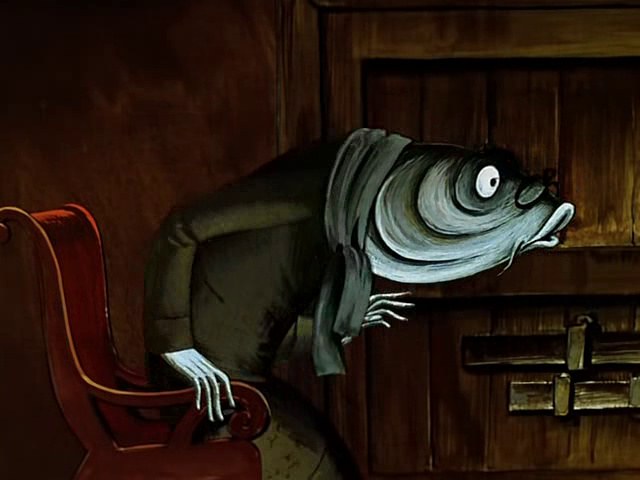
Kazki for "children of non-abiyakogo viku"
In the case of the most dangerous reactions and suvor censorship, which simply unbearable minds for the continuation of their literary activity, Saltikov-Generous know a glimpse of the situation, which has been announced. Itself at that hour, when you started writing your own, create in the form of kazoks, as they allowed them to continue bichuvannya vices of the Russian suspension against the trick of the censorship.
Cossacks became for the satirist a conservative economical form, which allowed them to continue their past creativity. Prikhovyuchi the true sense of the written censorship, the writer vikoristovuvav esopova mova, grotesque, hyperbole and antithesis. At the Kazakhs for the "children of the unabashed viku" Saltikov-Shchedrin, like and earlier, talking about the importance of the share of the people and their rotten rot. Bureaucrats, city governors-pompaduri and other inappropriate characters appear in kazkas in the images of creatures - eagle, vovka, weddy and ін.
"Alive - tremtіv, and in the world - tremtіv"
One of these creations was the textbook Cossack "Wise Piskarov", written by Saltikova-Shchedrina in 1883. The plot of the kazka, which informs about the life of the most sinister bird, see it as if it was a happy person. You may have a fearful character, you can find a closed way of life, you can not get lost in your nori, you can look out of your skin and wash your skin. So I live until my death, and only in the end of my life until I come, knowing nothing of the details of my everyday life. Before dying, in the first place, there is food, to feel the whole life: "Who is it that has been blown up, who has been helped, who has killed the good and the cinnamon?". I don’t know about it, I don’t need it, and it’s unlikely that I wondered about a new guess.
According to the spelling norms of the 19th century, the word "piskar" was written through "i" - "Piskarov".
In the whole plot, a satirist in a caricatured form clearly depicts the sound of a happy local Russia. The image of the bird took away all the inappropriateness of the fearful, self-contained dweller, constantly shaking at its skin. "Alive - tremty, and in peace - tremty" - this is the moral of the satirical language.
Viraz "wise piskar" Lenin in the struggle with the liberals, the colossal "livy Octobrists", who have gone over to the adoption of the right-liberal model of constitutional democracy.
To read the books of Saltikov-Shchedrin to finish neatly, because people cannot and cannot see a great intelligence that a writer can contribute to their creation. Thoughts, like victories in the cossacks of a talented satirist, and at once relevant in Russia, as loaded in the low social problems.
